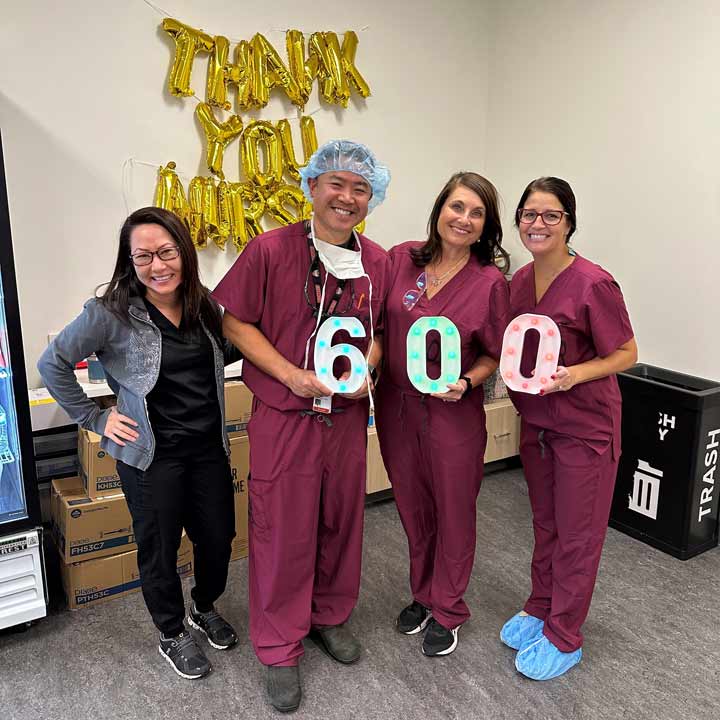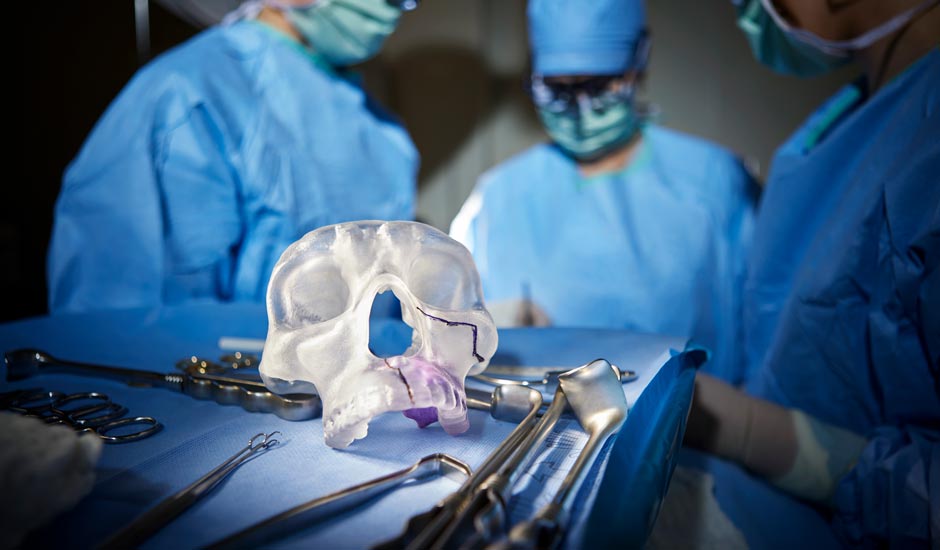 Otolaryngologist and sleep surgeon Eugene Chio, MD, has implanted more than 600 upper airway stimulation devices – more than anyone in the world. The device, sometimes referred to as “Inspire” after the company that developed it, is for patients with moderate to severe obstructive sleep apnea (OSA) who don’t tolerate continuous positive airway pressure (CPAP) therapy. It delivers mild, unilateral stimulation to the hypoglossal nerve to improve tone and prevent the tongue from blocking the airway.
Otolaryngologist and sleep surgeon Eugene Chio, MD, has implanted more than 600 upper airway stimulation devices – more than anyone in the world. The device, sometimes referred to as “Inspire” after the company that developed it, is for patients with moderate to severe obstructive sleep apnea (OSA) who don’t tolerate continuous positive airway pressure (CPAP) therapy. It delivers mild, unilateral stimulation to the hypoglossal nerve to improve tone and prevent the tongue from blocking the airway.
In addition, Dr. Chio pioneered a two-incision approach to implantation that the device manufacturer has incorporated into its training curriculum. This modification to the original three-incision approach reduces surgical time from two to three hours to less than one hour and offers multiple patient benefits, such as an improved healing process and potentially lower risk of infection.
During the outpatient surgical procedure, Dr. Chio makes an incision under the chin to connect a lead to the hypoglossal nerve and another incision below the collarbone to place the battery and the respiratory sensor.
“I developed this approach in 2020 and published a paper about it later that year, which generated interest,” says Dr. Chio, director of the Sleep Surgery Program at The Ohio State University Wexner Medical Center. “Inspire used data from my practice and a few others to confirm that surgical outcomes weren’t inferior compared to the three-incision method. The company now regards doing two incisions as the standard of care.”
Previously, surgeons did a third incision and implanted the sensor in the flank. Patients wore a sling for a few weeks after surgery to limit right-arm movement and let the incision heal without tension.
A significant reduction in sleep apnea events
Initial studies show upper airway stimulation patients experienced a 78% reduction in sleep apnea events and reduced snoring. About 85% of bed partners report no snoring or soft snoring. In addition to helping patients with OSA, this therapy may also be appropriate for patients with both obstructive and central sleep apnea, as long as the central sleep apnea episodes account for less than 25% of all disrupted breathing episodes.
Fully customizable
The patient uses a handheld remote to turn the device on and off based on their sleep schedule. The device can begin operating at a set interval after going to bed (typically 30 minutes), allowing adequate time for the patient to fall asleep naturally.
“The device senses chest wall motion and respiratory effort, issuing stimulation only when the patient inhales, which is when OSA occurs,” Dr. Chio says. “This stimulation moves the tongue forward to prevent airway obstruction. Upon rising, the patient simply turns off the device using the remote.”
The device battery lasts about 11 years and can be replaced when necessary.
The therapy is approved for patients with a body mass index (BMI) of less than 32, although patients with a BMI of up to 35 may be eligible. An evaluation for upper airway stimulation includes a drug-induced sleep endoscopy to ensure the patient’s anatomy is compatible with treatment.
Rapid volume growth
The surgical volume for this procedure has been growing, especially in the last two years. Between 2014 and September 2019, surgeons implanted about 16,000 devices worldwide. Between September 2021 and September 2022, 25,000 implants were performed. Within the next two years, Inspire expects to surpass 40,000 implants annually.
Dr. Chio and his colleagues in the departments of Otolaryngology – Head and Neck Surgery and Sleep Medicine at the Ohio State Wexner Medical Center offer other procedures for people with moderate to severe OSA, including tonsil removal, nasal surgery, palate surgery, tonsil and soft palate procedures and tongue-based procedures. They also participate in a national clinical trial testing the efficacy and safety of a stimulator that provides bilateral hypoglossal nerve stimulation. The device is approved for commercial use in Europe but not yet in the United States.
The Ohio State Wexner Medical Center was designated as an Inspire Center of Excellence in 2019, one of only about 20 in the world.
“Interest in the Inspire device and our other sleep apnea procedures has led to a major surge in patient volume within our sleep surgery program,” says Minka Schofield, MD, director of the Division of General Otolaryngology at the Ohio State Wexner Medical Center. “We already have five physicians and two advanced practice providers within our general division, but we need to expand to meet our increased number of sleep surgery referrals. We’re actively recruiting another sleep surgeon and hope to continue growing our team over the next year.”

2022 Year in Review
See how Ohio State is shaping the field of Otolaryngology – Head and Neck Surgery.
